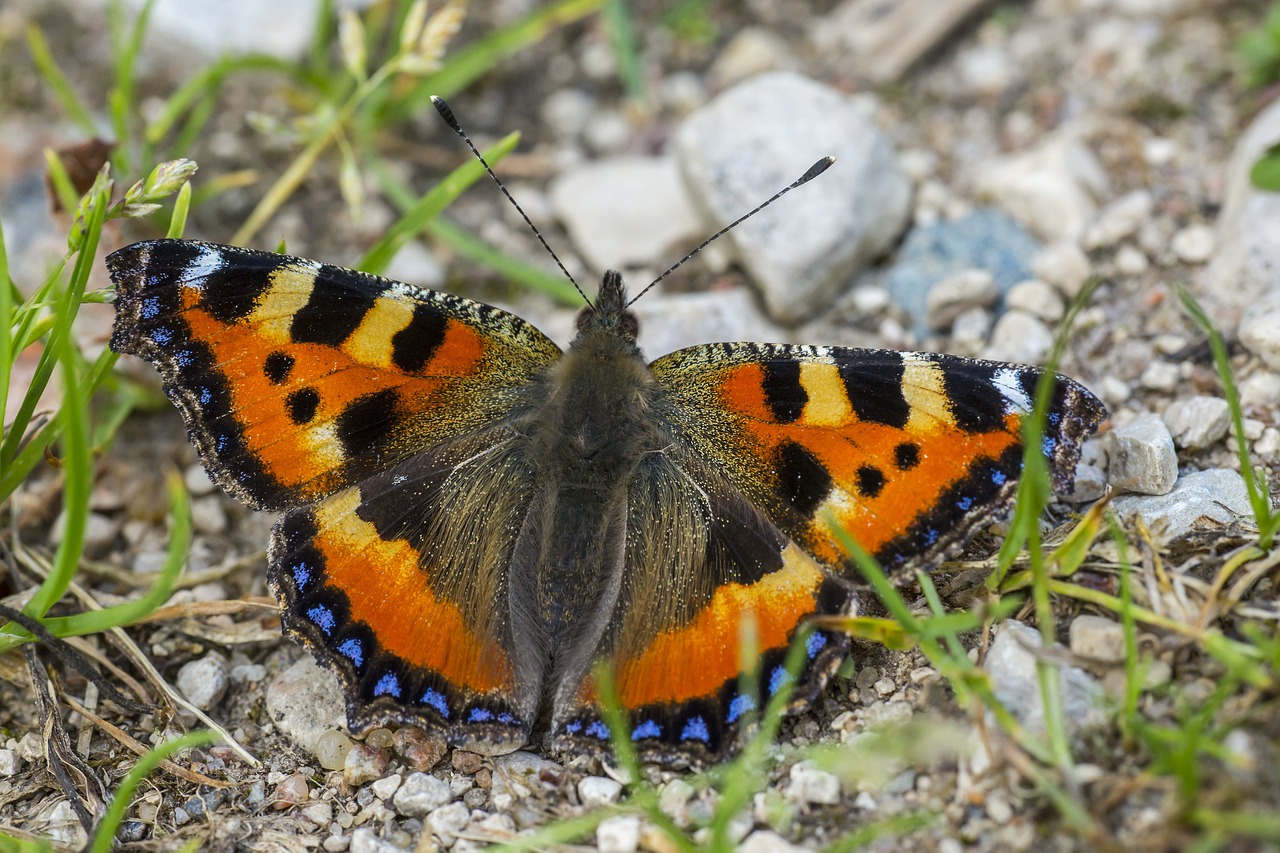The Small Tortoiseshell (Aglais urticae) is a common butterfly species found throughout Europe and parts of Asia. It is known for its vibrant colors and patterns, making it one of the most recognizable butterflies in these regions.
Characteristics:
- Appearance: The upper side of the wings is bright orange with black and yellow spots, along with a row of small blue spots along the wing edges. The undersides are mottled brown, which provides camouflage when the butterfly is at rest.
- Size: The wingspan ranges from 45 to 62 mm.
Habitat:
- Range: The Small Tortoiseshell is widespread across Europe, Asia Minor, Central Asia, and Siberia.
- Environment: It thrives in various habitats, including gardens, parks, meadows, and woodlands. It is particularly abundant where stinging nettles (Urtica dioica) grow, as these plants are the primary food source for its caterpillars.
Behavior:
- Feeding: Adults feed on nectar from various flowers, such as thistles, buddleia, and dandelions. The larvae feed on the leaves of nettles.
- Lifecycle: The Small Tortoiseshell undergoes a complete metamorphosis with four life stages: egg, larva (caterpillar), pupa (chrysalis), and adult. The species can produce up to two generations per year, depending on the climate.
- Hibernation: One of the few butterflies that overwinter as adults, often hibernating in sheds, attics, or natural shelters.
Conservation Status:
The Small Tortoiseshell is currently not endangered. However, its populations can be affected by factors such as habitat loss, pesticide use, and changes in climate. Despite these challenges, it remains one of the most common and widespread butterflies in its range.
Visited 917 times, 4 visit(s) today
Views: 1761
Subscribe to the newsletter:
